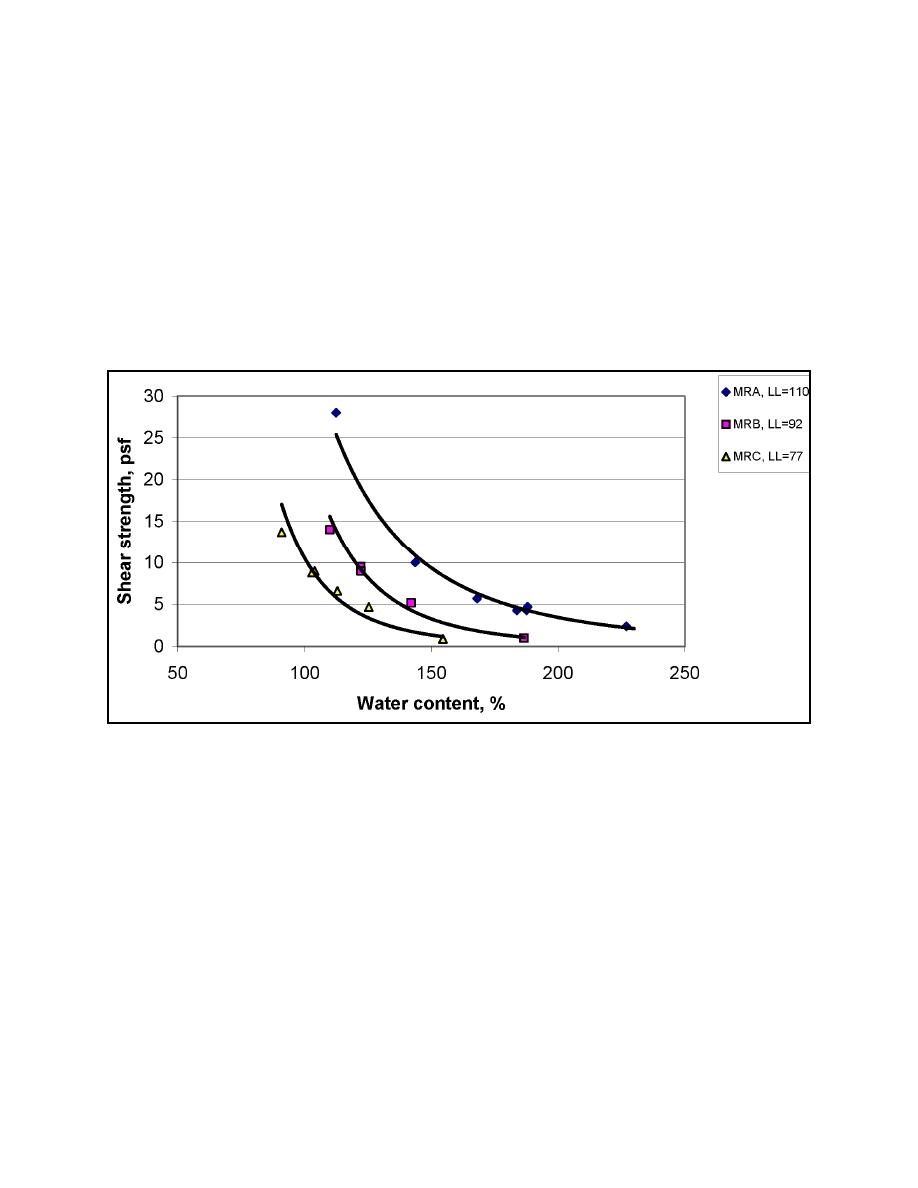 |
||
|
|
||
|
Page Title:
Figure 3. Undrained shear strength vs. water content on drying to the liquid limit |
||
| |||||||||||||||
|
|
 ERDC TN-DOER-D2
September 2004
median grain size (D50 ) value alone, all three samples would appear to be virtually the same
material, but the mean grain size indicates otherwise. The median grain size (D50 ) for all three
samples has a variance (σ2) of only 0.000003 mm, while the mean grain size variance is much
greater at 0.004 mm.
Although the materials would appear to be the same based on soil type classification, the engi-
neering behavior of each material is unique. For example, Figure 3 shows the undrained shear
strength curve for each material as a function of decreasing water content. For any given water
content, there are three different shear strength values, varying from 3 to 25 psf (0.1 to 1.2 kPa).
Undrained shear strength is a measurement of the ability of the soil to withstand imposed loading
such as the weight of an overlying sand cap, for example. The higher the shear strength value,
the higher the loading ability.
Figure 3. Undrained shear strength vs. water content on drying to the liquid limit
The ability to predict undrained shear strength in dredged materials is important to the
geotechnical engineer responsible for analyzing subaqueous slope stability or designing
engineered structures built with dredged material. For a simplistic example, based solely on the
shear strength curves shown above where water contents exceed the liquid limits, a slightly
steeper subaqueous slope geometry and/or a slightly larger overburden stress may be obtainable
using material dredged from the upper reaches of the river (MRA). At water contents above the
liquid limit, the materials with progressively less sand content have greater shear strength. The
implication here is that each sample exhibits a slightly different engineering behavior, which
would impact the material behavior after final disposal or placement. Spatial variability in
dredged material properties could thus affect engineering decisions. The ability to choose or
reject dredged materials based on their engineering behavior differences has obvious economic
implications.
4
|
|
Privacy Statement - Press Release - Copyright Information. - Contact Us - Support Integrated Publishing |